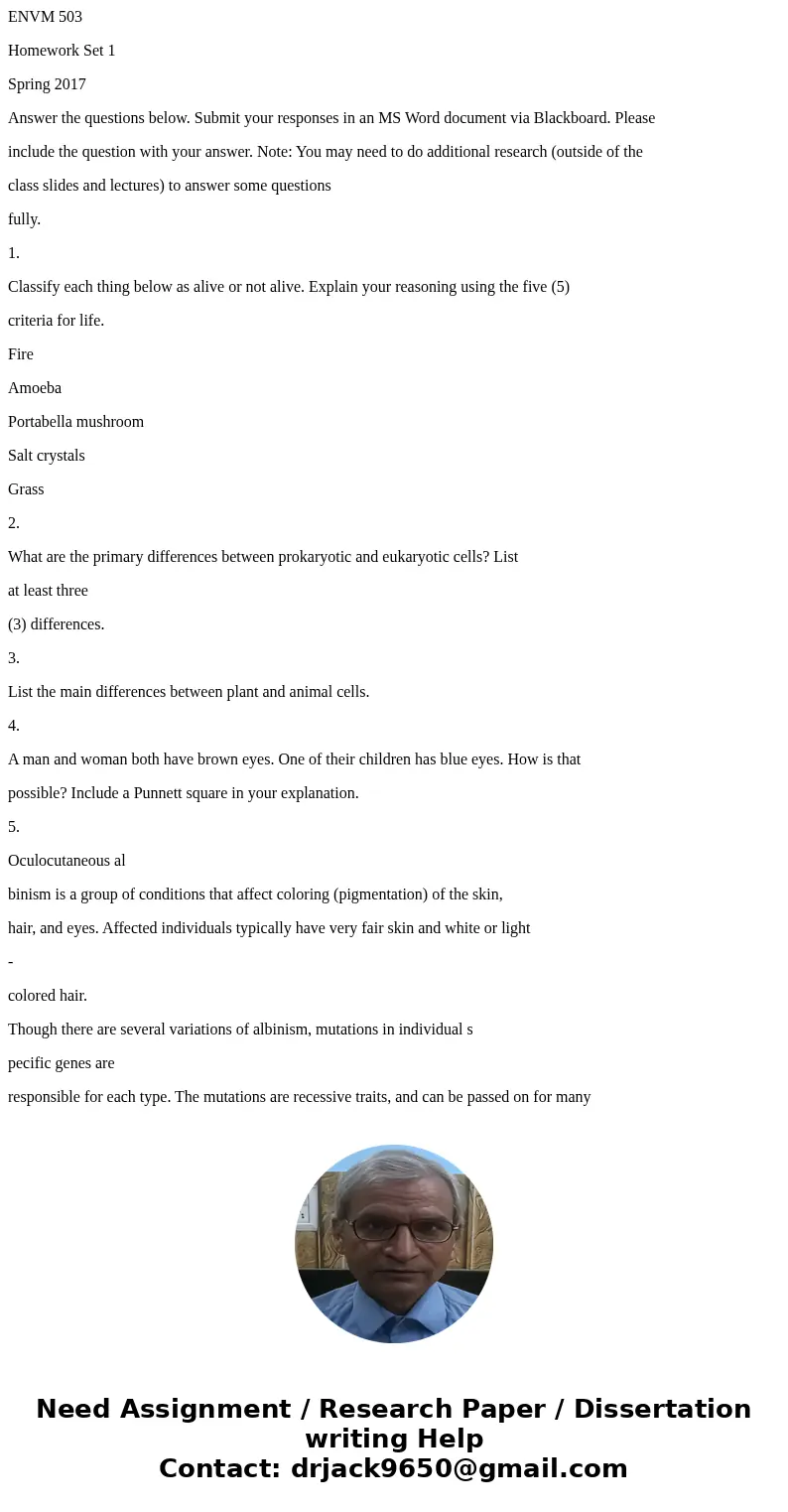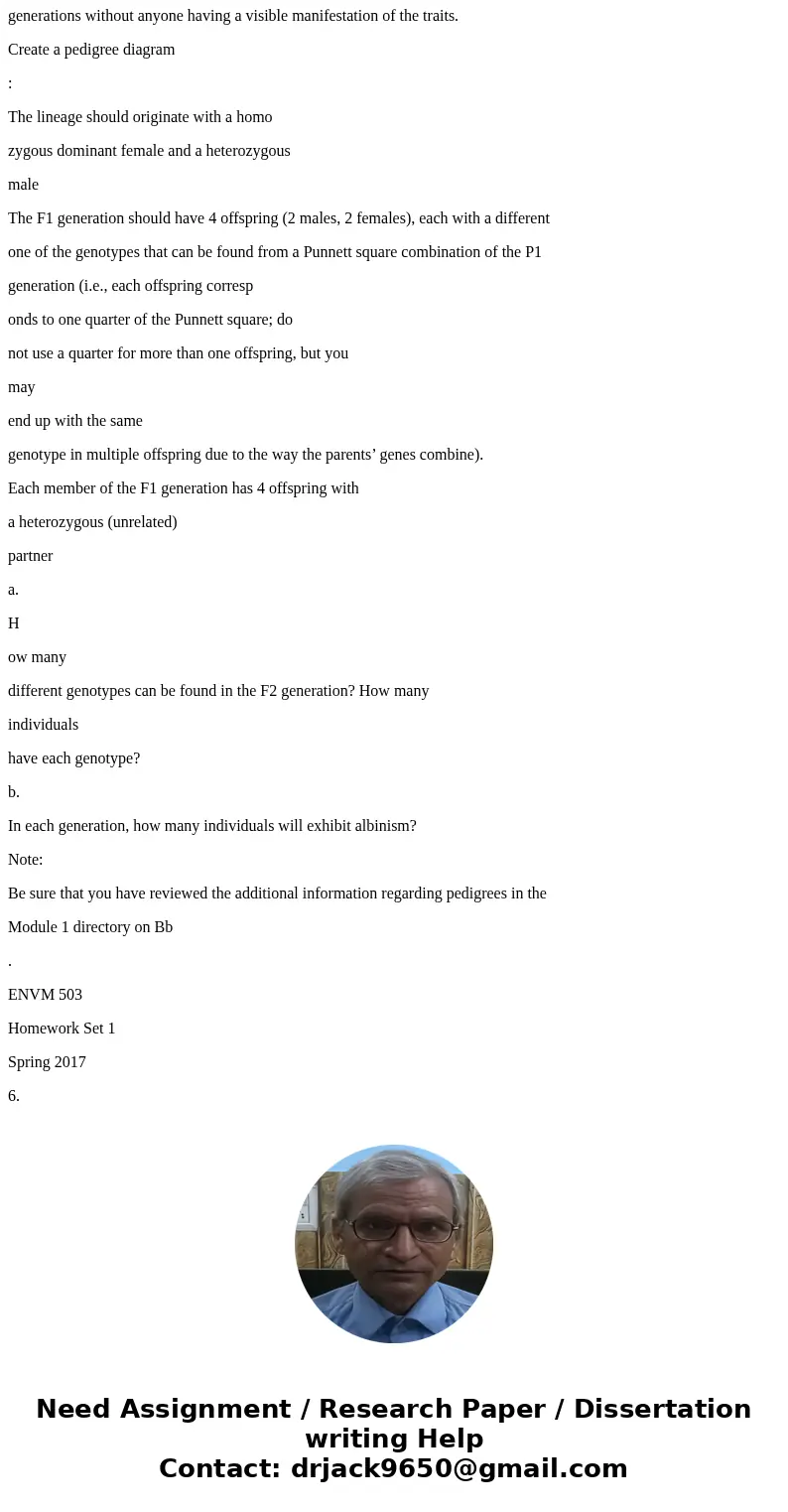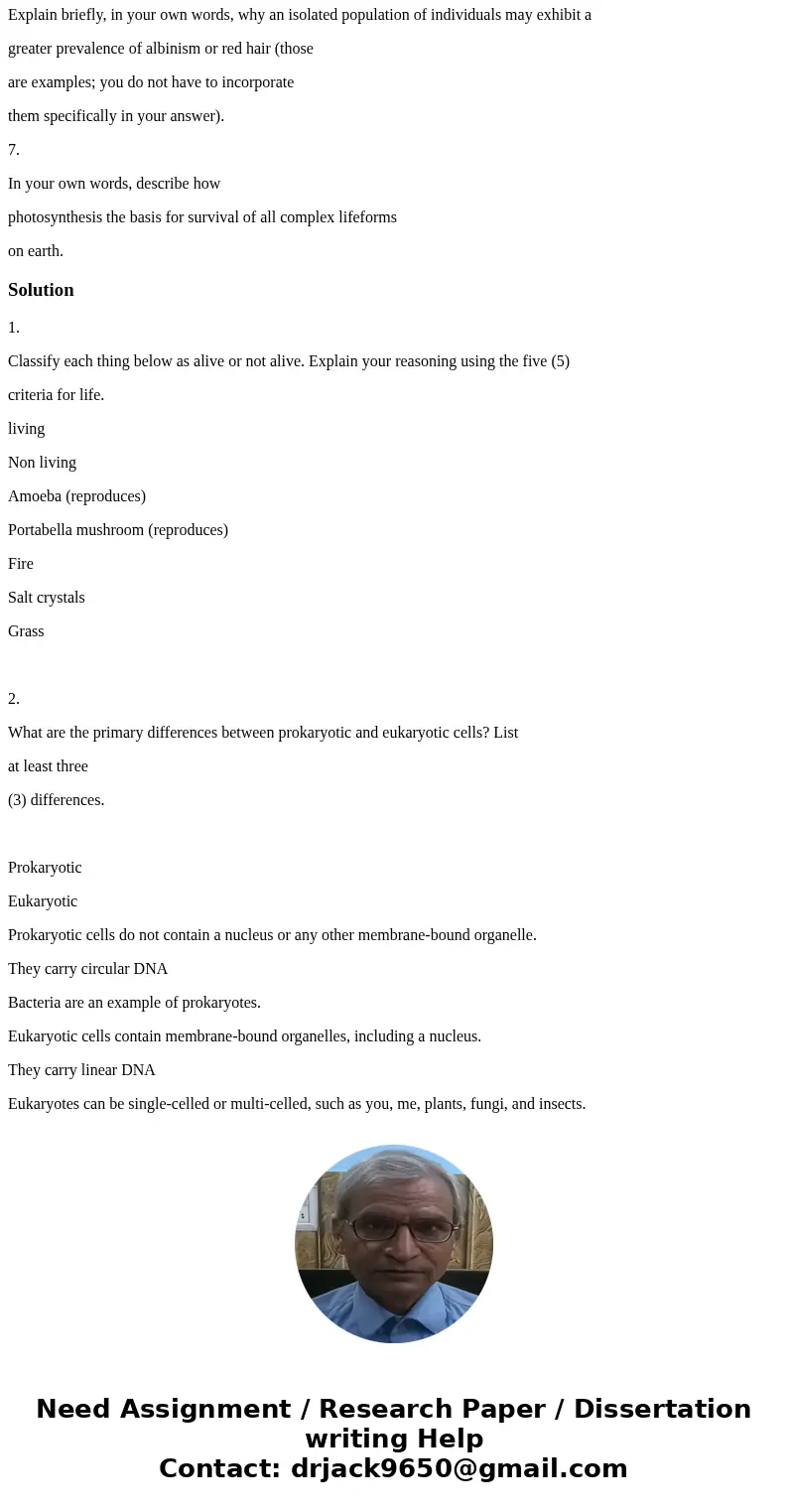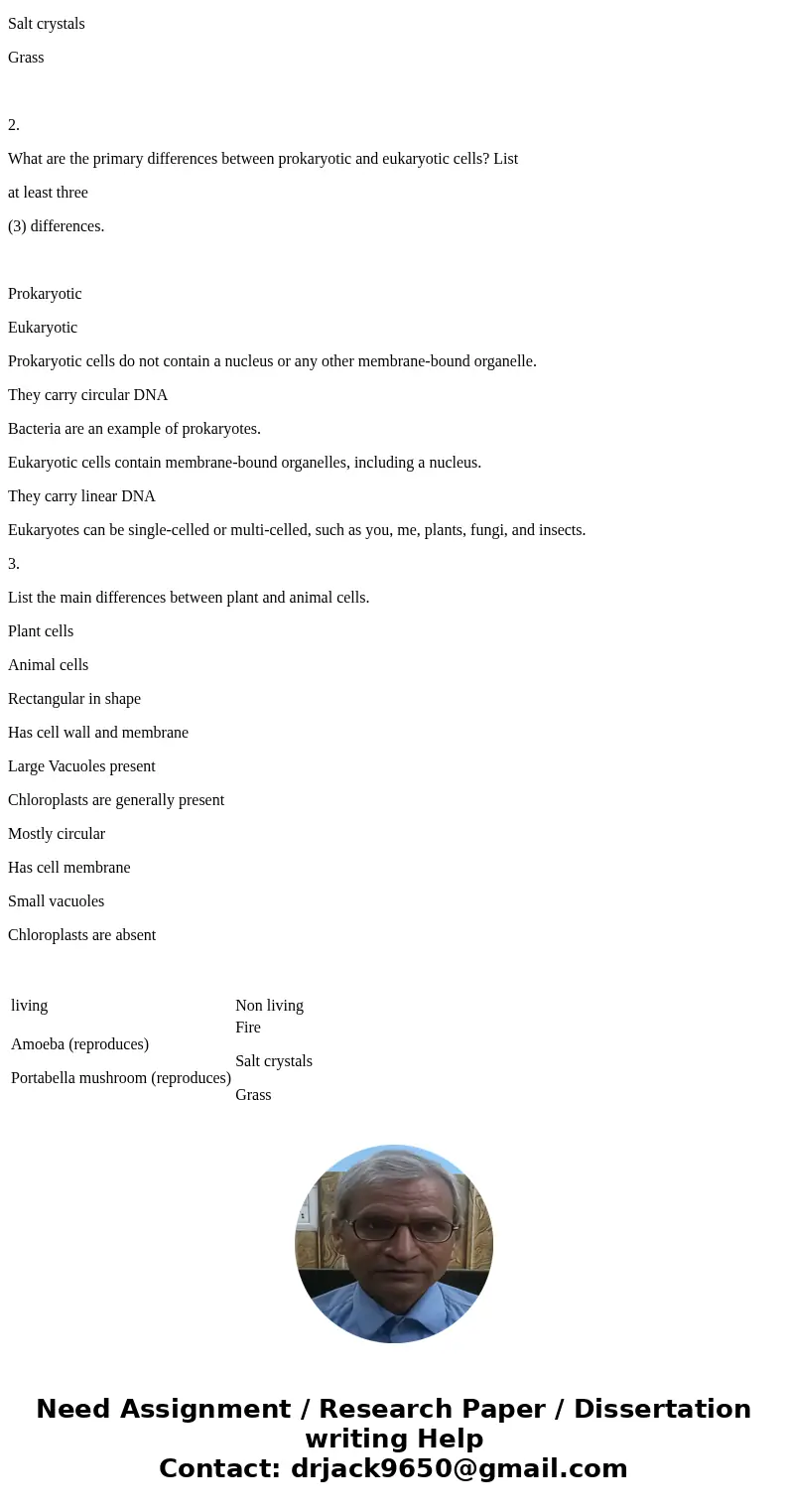ENVM 503 Homework Set 1 Spring 2017 Answer the questions bel
ENVM 503
Homework Set 1
Spring 2017
Answer the questions below. Submit your responses in an MS Word document via Blackboard. Please
include the question with your answer. Note: You may need to do additional research (outside of the
class slides and lectures) to answer some questions
fully.
1.
Classify each thing below as alive or not alive. Explain your reasoning using the five (5)
criteria for life.
Fire
Amoeba
Portabella mushroom
Salt crystals
Grass
2.
What are the primary differences between prokaryotic and eukaryotic cells? List
at least three
(3) differences.
3.
List the main differences between plant and animal cells.
4.
A man and woman both have brown eyes. One of their children has blue eyes. How is that
possible? Include a Punnett square in your explanation.
5.
Oculocutaneous al
binism is a group of conditions that affect coloring (pigmentation) of the skin,
hair, and eyes. Affected individuals typically have very fair skin and white or light
-
colored hair.
Though there are several variations of albinism, mutations in individual s
pecific genes are
responsible for each type. The mutations are recessive traits, and can be passed on for many
generations without anyone having a visible manifestation of the traits.
Create a pedigree diagram
:
The lineage should originate with a homo
zygous dominant female and a heterozygous
male
The F1 generation should have 4 offspring (2 males, 2 females), each with a different
one of the genotypes that can be found from a Punnett square combination of the P1
generation (i.e., each offspring corresp
onds to one quarter of the Punnett square; do
not use a quarter for more than one offspring, but you
may
end up with the same
genotype in multiple offspring due to the way the parents’ genes combine).
Each member of the F1 generation has 4 offspring with
a heterozygous (unrelated)
partner
a.
H
ow many
different genotypes can be found in the F2 generation? How many
individuals
have each genotype?
b.
In each generation, how many individuals will exhibit albinism?
Note:
Be sure that you have reviewed the additional information regarding pedigrees in the
Module 1 directory on Bb
.
ENVM 503
Homework Set 1
Spring 2017
6.
Explain briefly, in your own words, why an isolated population of individuals may exhibit a
greater prevalence of albinism or red hair (those
are examples; you do not have to incorporate
them specifically in your answer).
7.
In your own words, describe how
photosynthesis the basis for survival of all complex lifeforms
on earth.
Solution
1.
Classify each thing below as alive or not alive. Explain your reasoning using the five (5)
criteria for life.
living
Non living
Amoeba (reproduces)
Portabella mushroom (reproduces)
Fire
Salt crystals
Grass
2.
What are the primary differences between prokaryotic and eukaryotic cells? List
at least three
(3) differences.
Prokaryotic
Eukaryotic
Prokaryotic cells do not contain a nucleus or any other membrane-bound organelle.
They carry circular DNA
Bacteria are an example of prokaryotes.
Eukaryotic cells contain membrane-bound organelles, including a nucleus.
They carry linear DNA
Eukaryotes can be single-celled or multi-celled, such as you, me, plants, fungi, and insects.
3.
List the main differences between plant and animal cells.
Plant cells
Animal cells
Rectangular in shape
Has cell wall and membrane
Large Vacuoles present
Chloroplasts are generally present
Mostly circular
Has cell membrane
Small vacuoles
Chloroplasts are absent
| living | Non living |
| Amoeba (reproduces) Portabella mushroom (reproduces) | Fire Salt crystals Grass |




 Homework Sourse
Homework Sourse